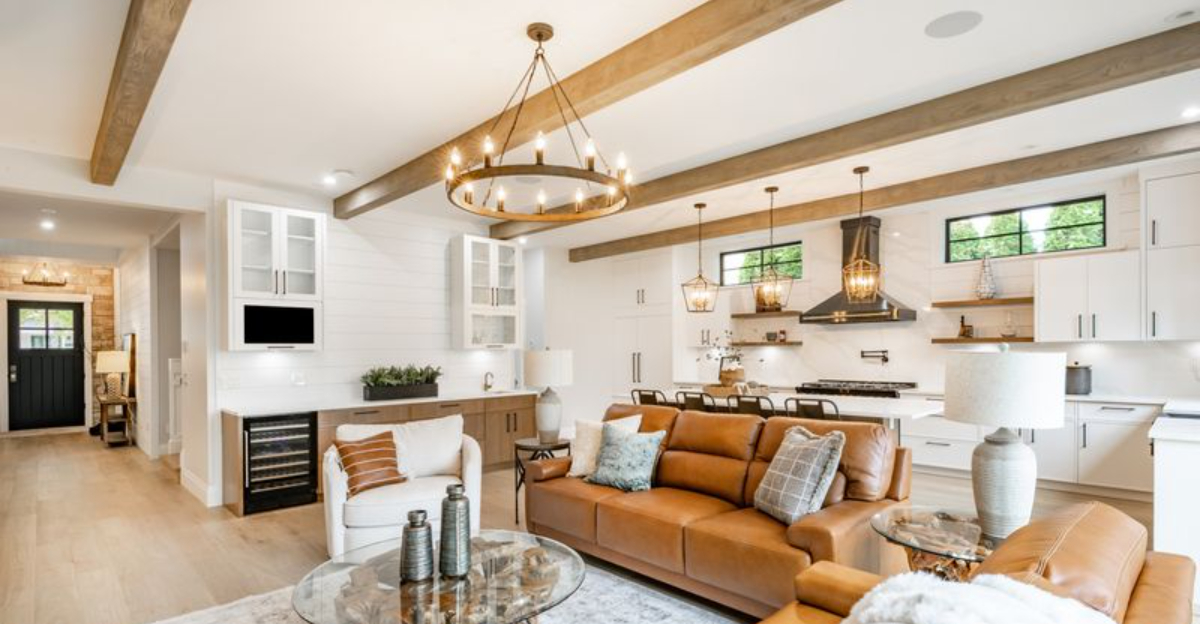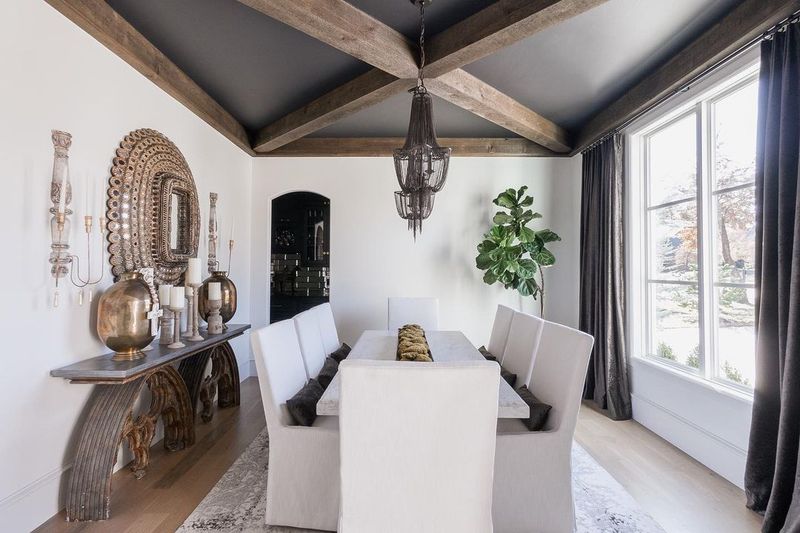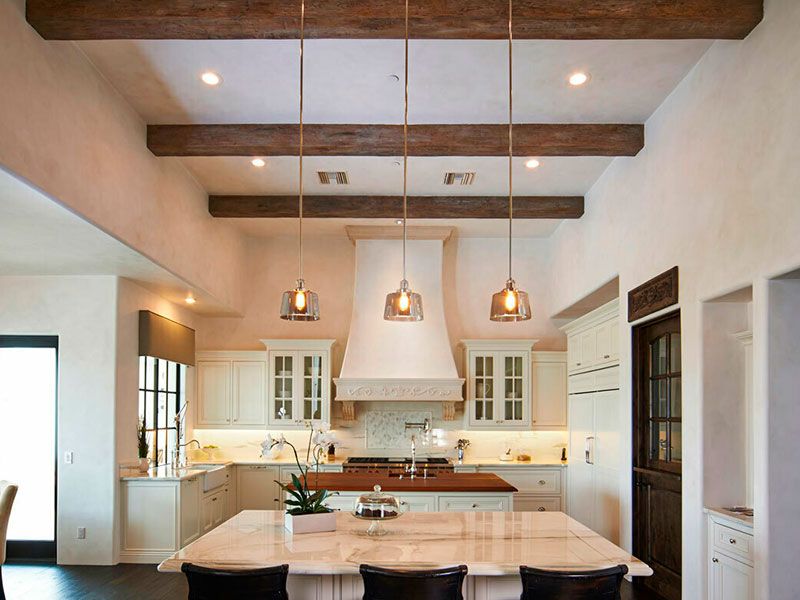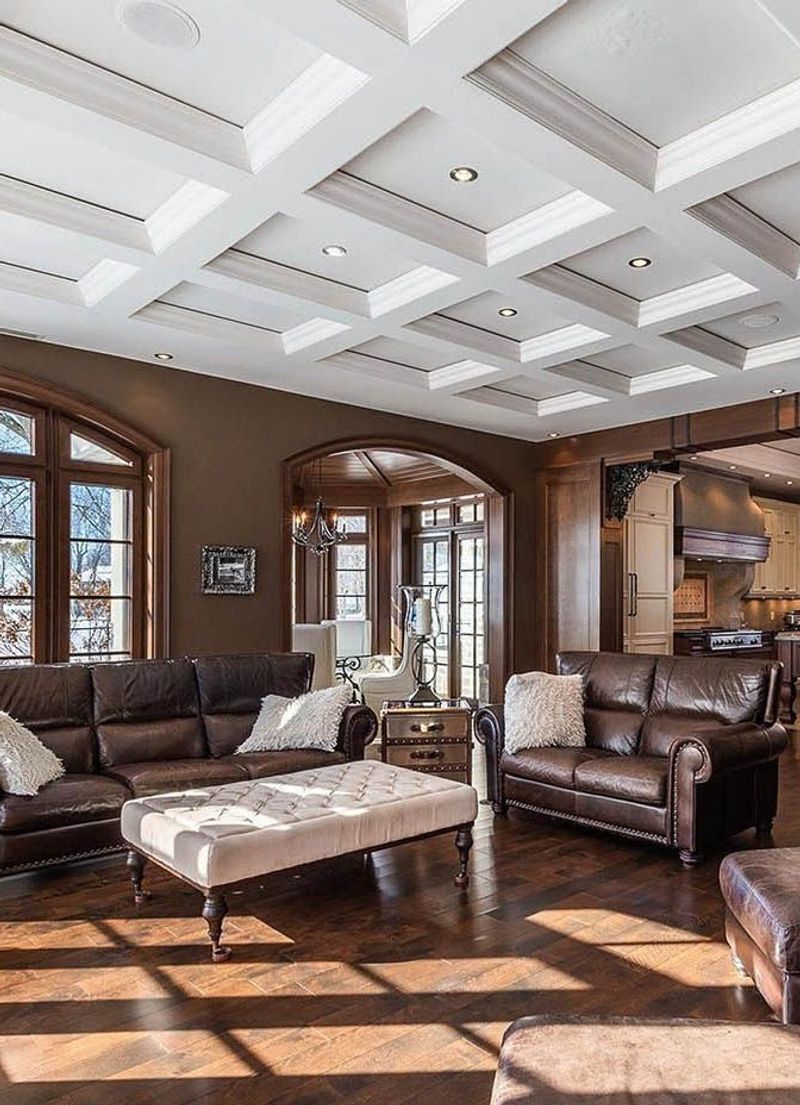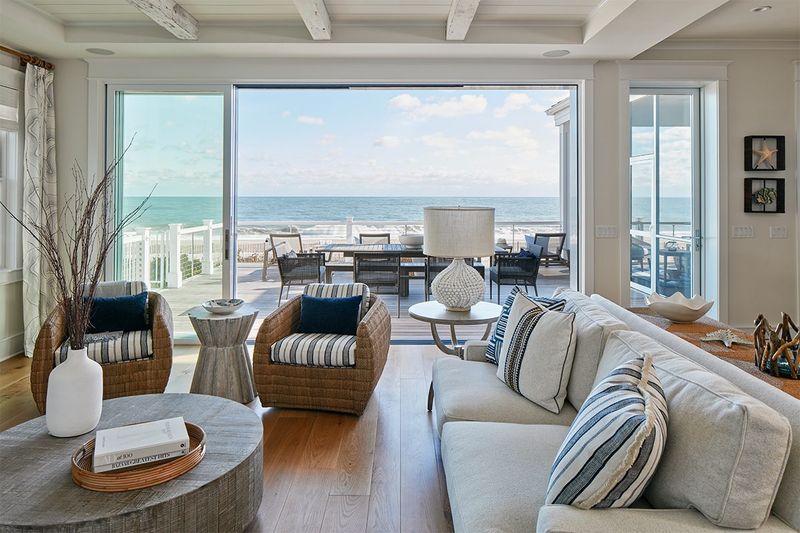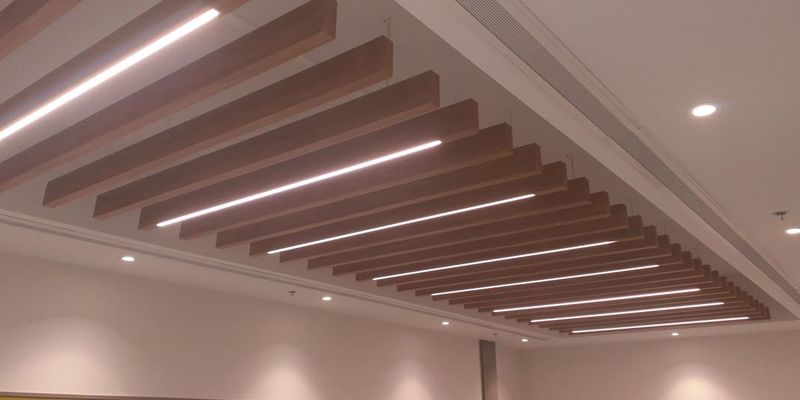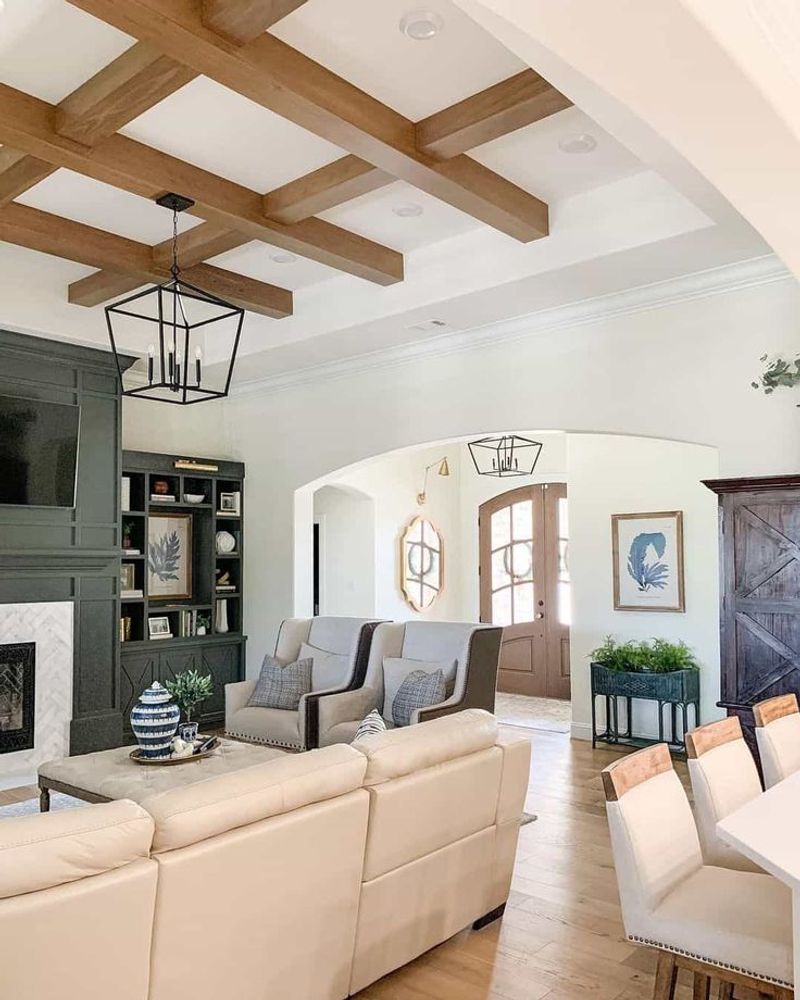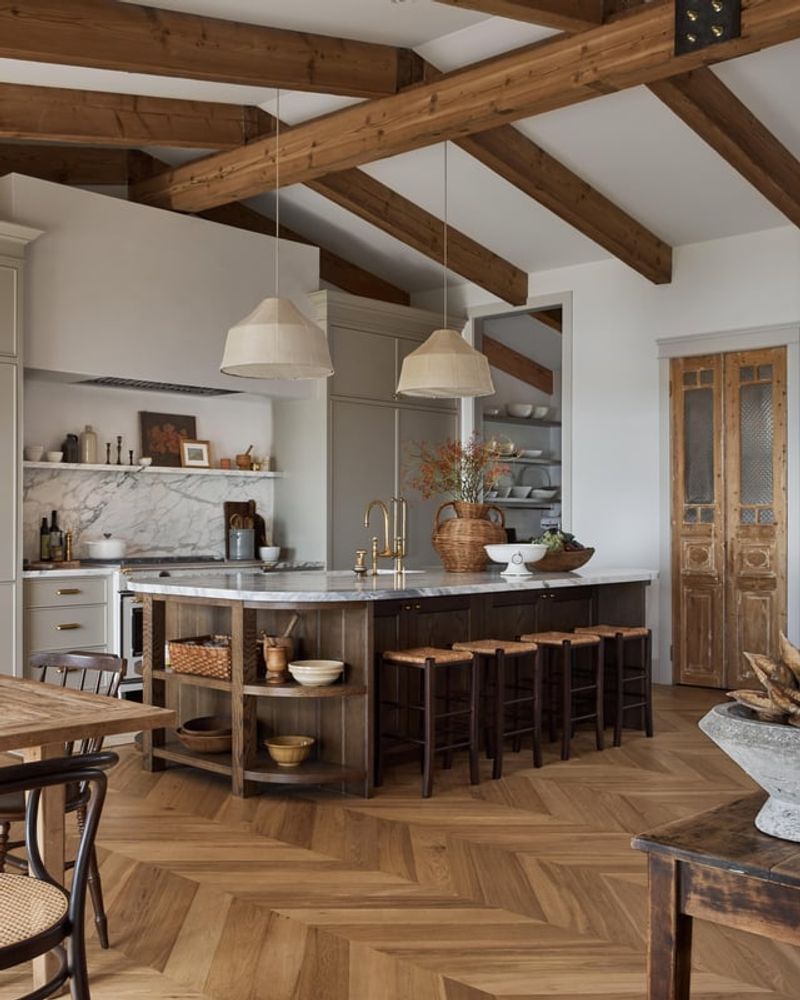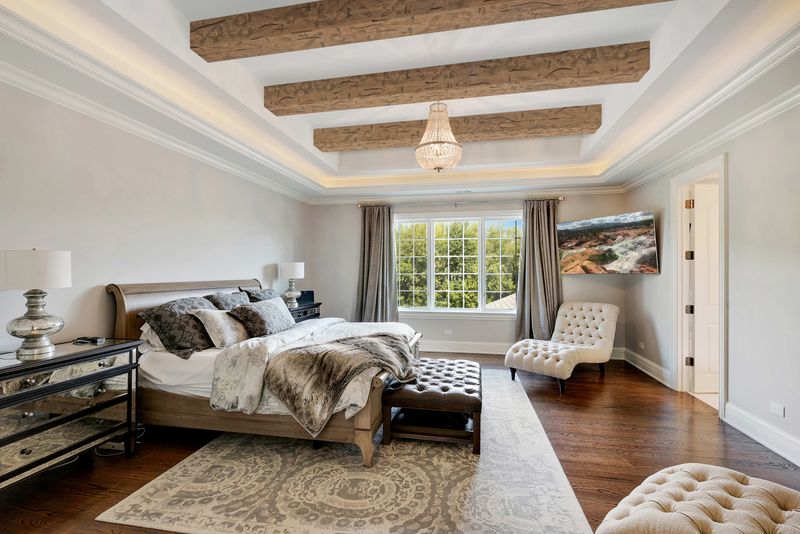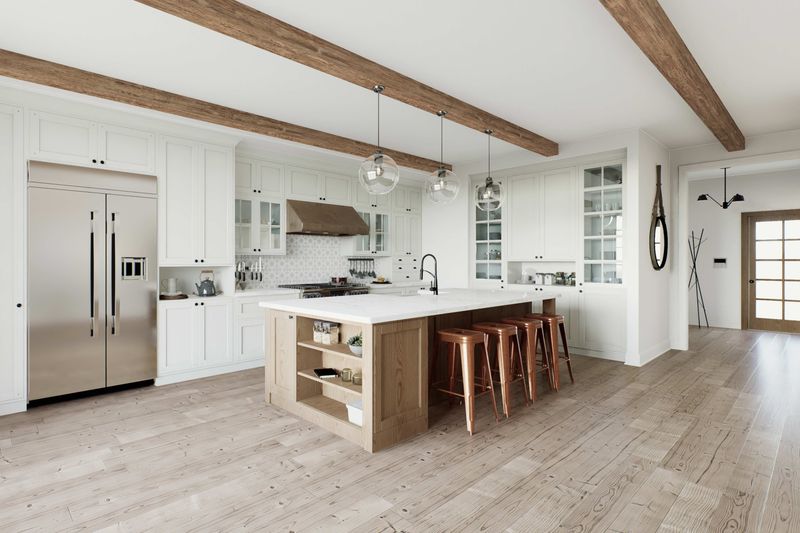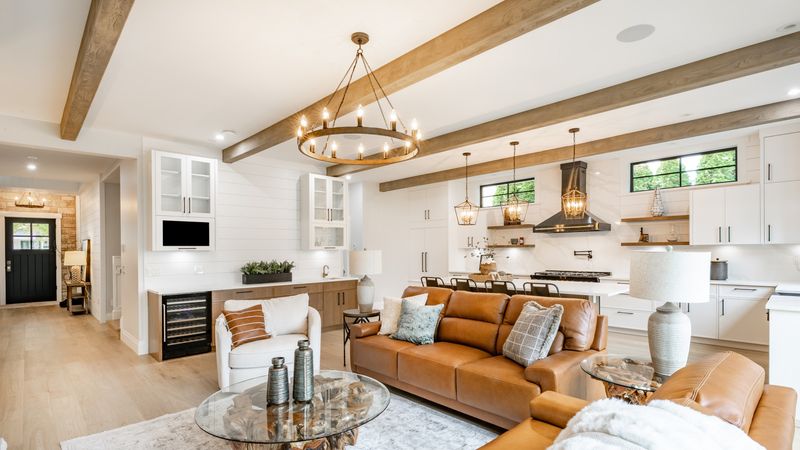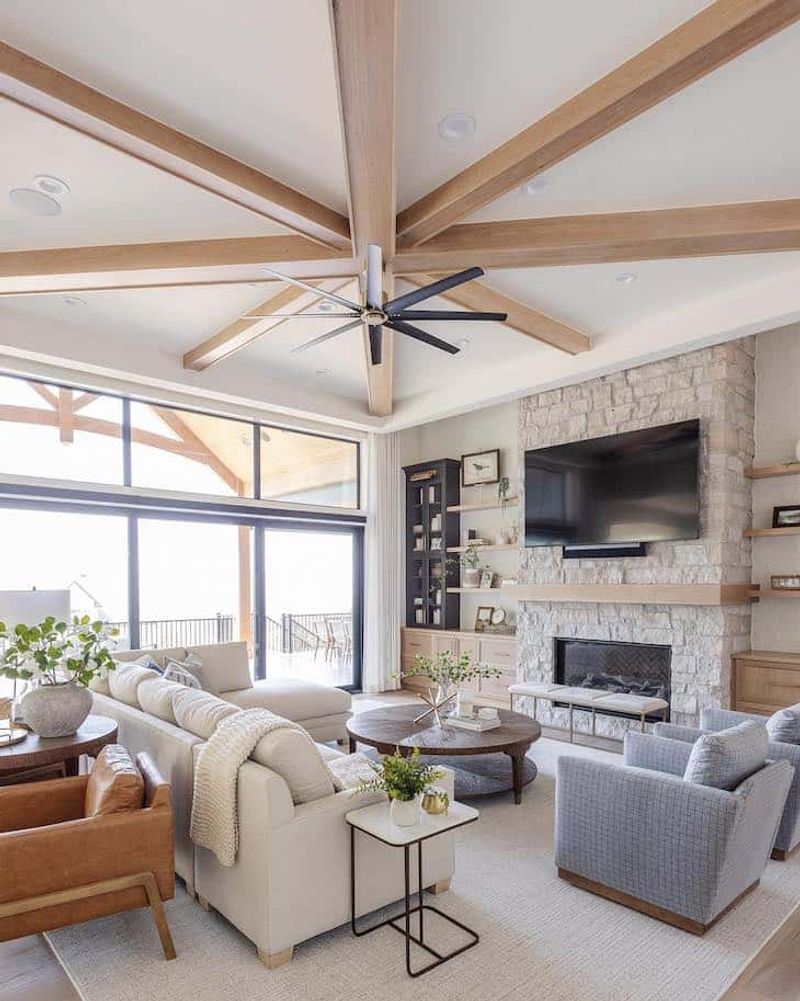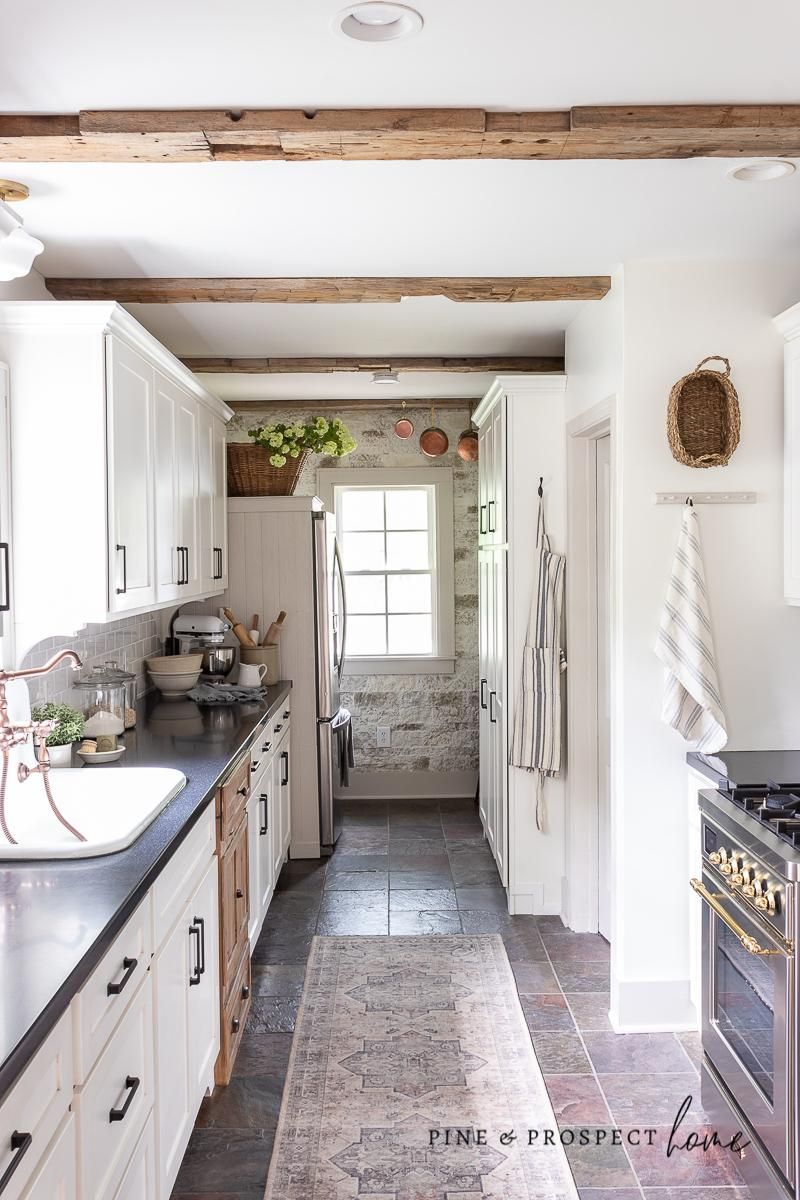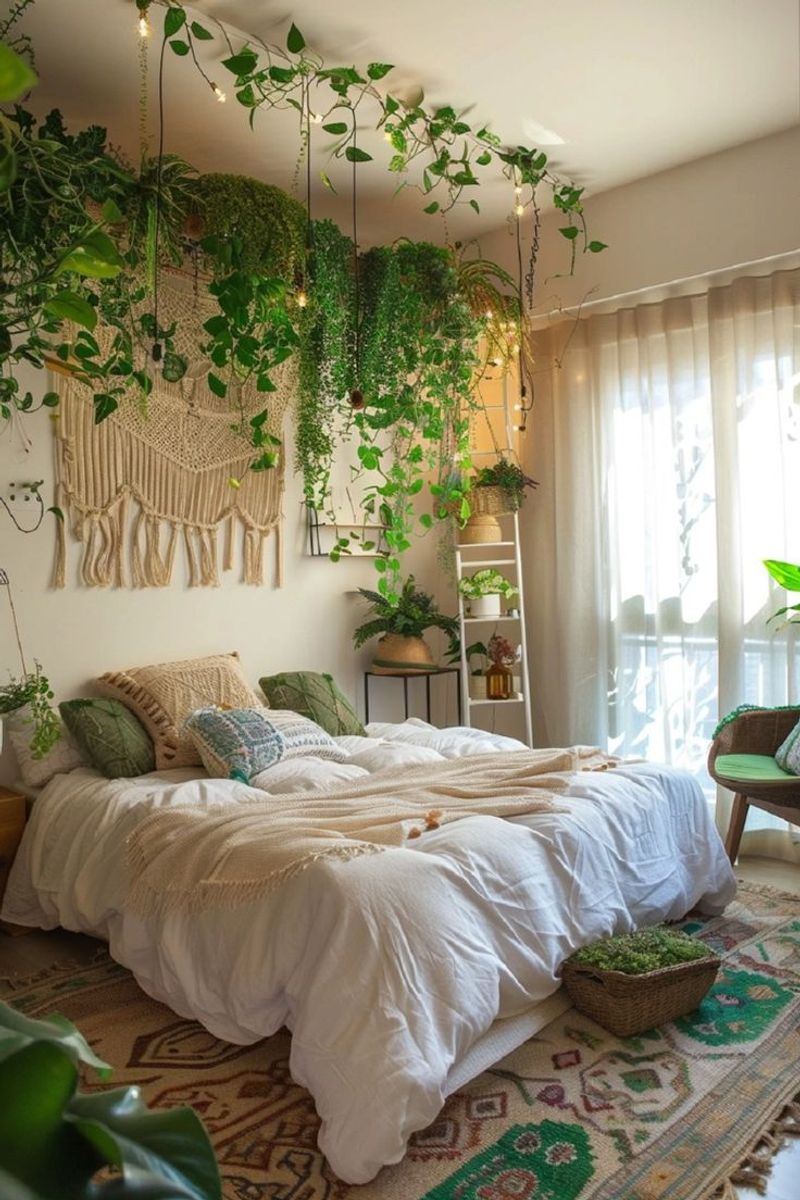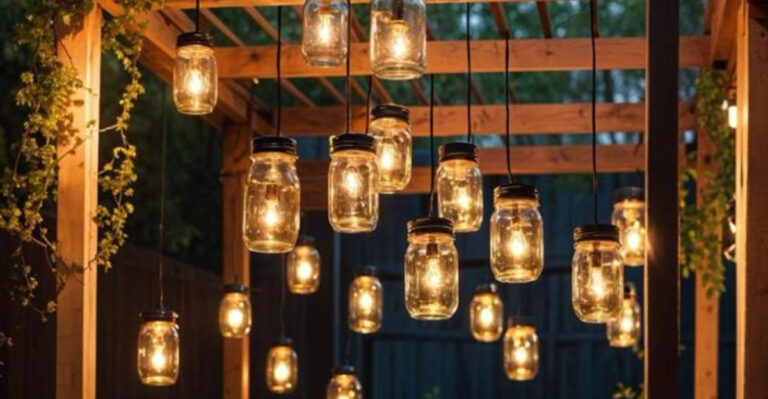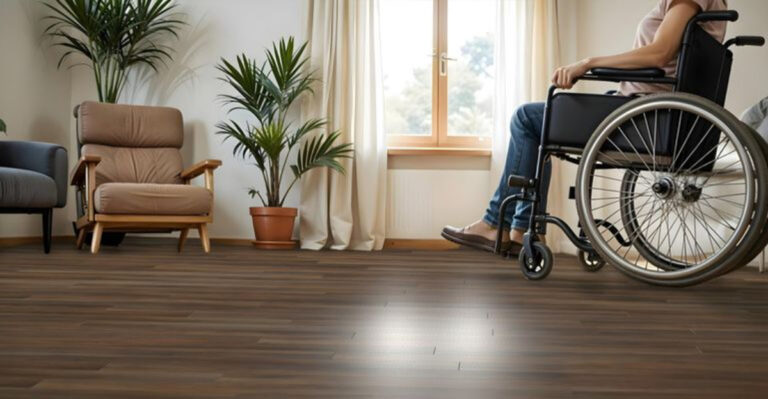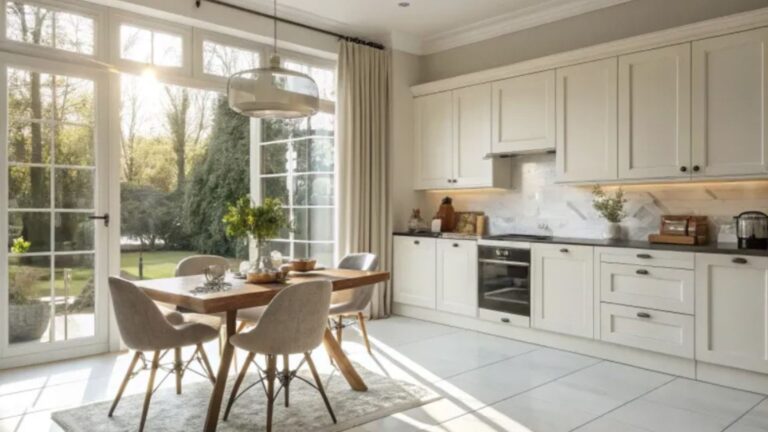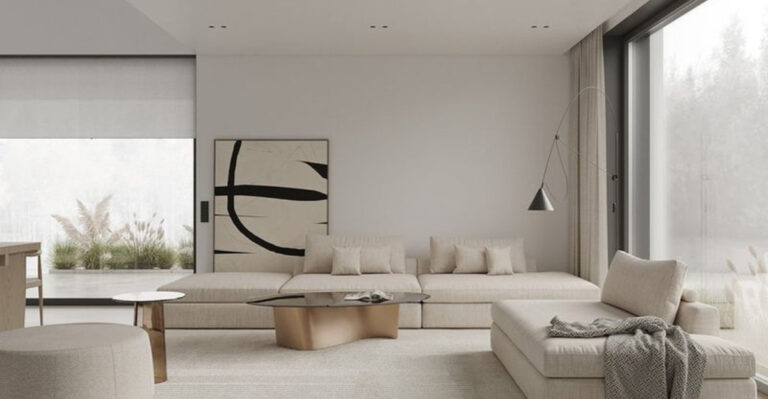16 Examples Of Decorative Beams In Rooms With A Low Ceiling Which Prove That This Is Not Only Possible, But Stylish Too
Many homeowners shy away from adding decorative beams to low-ceiling rooms, fearing they’ll make the space feel cramped or heavy.
But what if these architectural elements could actually enhance your room’s character while maintaining an airy feel?
Decorative beams can transform a plain ceiling into a stunning focal point, adding texture, dimension, and timeless charm—even in spaces where height is limited.
1. Slim Dark Beams for Modern Contrast
Contrary to popular belief, dark elements can actually enhance a space when used strategically. Thin, sleek black beams create striking geometric patterns against a white ceiling without visually lowering it.
The contrast draws the eye upward, making the room feel taller rather than compressed. When complemented with minimalist décor and strategic lighting, these dramatic lines become an architectural feature that defines your space with contemporary sophistication.
2. Faux Beams for Lightweight Appeal
Who would guess these gorgeous ceiling features aren’t solid wood? Hollow faux beams offer the perfect solution for low ceilings since they add minimal weight and height reduction.
Made from polyurethane or lightweight wood composites, these clever alternatives look identical to the real thing but install with much less structural support. You can achieve that timber-frame look without sacrificing precious inches or dealing with the complications of supporting heavy wood.
3. Painted Beams Matching Wall Color
Smart designers know that visual continuity can make a space feel larger! When beams are painted the exact same color as your walls, they create architectural interest without visually chopping up the ceiling.
This monochromatic approach allows the texture and dimension to shine while maintaining an unbroken visual flow from wall to ceiling. The result is a sophisticated, cohesive look that adds character without making your low ceiling feel oppressive.
4. Coffered Pattern for Classic Elegance
Shallow coffered ceilings bring timeless sophistication to spaces with height constraints. By using minimal depth (just 2-3 inches), this traditional pattern adds visual interest without feeling imposing.
The recessed squares create a subtle play of light and shadow that draws the eye upward. When painted in light colors and installed with recessed lighting within the coffers, this architectural feature adds luxury while actually making your ceiling appear higher than it really is.
5. Whitewashed Beams for Coastal Vibes
Imagine walking into a beach cottage where the ceiling instantly catches your eye! Whitewashed beams bring that perfect seaside atmosphere without lowering your room’s visual height.
The light color blends seamlessly with white ceilings while adding subtle texture and interest. When paired with blue accents and natural materials, these beams create a breezy, relaxed environment that feels both open and defined.
6. Exposed Beams with Integrated Lighting
Lighting makes all the difference in how we perceive space! Clever homeowners are installing LED strip lighting along the edges of ceiling beams to create a magical floating effect.
The upward-facing light washes the ceiling with brightness between the beams, creating the illusion of greater height. This technique transforms structural elements into dramatic lighting features that highlight architecture while making the entire room feel more expansive and welcoming.
7. Crosshatched Beams for Cottage Charm
Crossing beams at right angles creates delightful geometric interest overhead without requiring much vertical space. This English cottage-inspired technique divides the ceiling into charming squares or rectangles that add character to even the plainest room.
When kept slim and painted in soft colors, these intersecting beams create texture without heaviness. The pattern naturally draws the eye across the ceiling rather than focusing on its height, making the entire space feel wider and more interesting.
8. Honey-Toned Wood for Farmhouse Warmth
Nothing says ‘welcome home’ quite like the golden glow of natural wood overhead. Medium-toned wooden beams bring farmhouse charm without the heaviness of darker varieties.
The warm honey color creates a cozy atmosphere while still reflecting enough light to keep the space feeling open. When arranged in a simple grid pattern, these beams add rustic texture that transforms an ordinary room into a country retreat, even with height limitations.
9. Metal Beams for Industrial Flair
Breaking all the rules sometimes yields the most striking results! Slender metal beams bring industrial chic to residential spaces while taking up minimal vertical real estate.
Their slim profile and reflective quality actually enhance the sense of space rather than diminishing it. When paired with exposed brick and vintage lighting, these metallic accents create an urban loft aesthetic that proves low ceilings can be incredibly stylish when embraced with confidence.
10. Curved Beams for Architectural Drama
Forget the notion that beams must always be straight! Arched or curved beams create extraordinary visual interest while following the natural contours of your ceiling.
These graceful elements draw the eye upward and outward, emphasizing the width of your space rather than its height limitations. Perfect for Spanish revival or Mediterranean-inspired interiors, curved beams bring unexpected softness and movement to rooms that might otherwise feel boxy or confined.
11. Beams with Recessed Ceiling Sections
Clever design can actually create the illusion of higher ceilings! By installing beams around the perimeter of a slightly recessed central ceiling section, you gain the dimensional interest of beams while visually lifting the center of the room.
This tray ceiling effect, even when the recess is just a few inches deep, dramatically transforms the perceived height. The beams serve as a beautiful transition between wall and ceiling while framing the elevated central portion for maximum impact.
12. Minimalist Beams with Clean Lines
Less is definitely more when working with limited ceiling height. Streamlined beams with simple, clean profiles add architectural interest without visual clutter or heaviness.
When paired with a monochromatic color scheme and thoughtful lighting, minimalist beams bring sophisticated structure to contemporary interiors while maintaining that crucial sense of openness.
13. Box Beams for Hollow Lightweight Structure
Wondering how to get substantial-looking beams without the bulk? Box beams create the appearance of solid structural elements while actually being hollow inside.
These clever constructions use thin wood panels assembled into three-dimensional boxes that install flush against your ceiling. You get the rich look of substantial timber without sacrificing precious inches of height or requiring extensive structural support—perfect for transforming low ceilings with architectural character.
14. Beams with Integrated Ceiling Fan
Function meets style in this brilliant space-saving solution! By mounting a low-profile ceiling fan between decorative beams, you gain practical air circulation without sacrificing your design aesthetic.
The beams actually help disguise the fan’s mounting hardware while creating a custom built-in look. This approach works particularly well with flush-mount or hugger-style fans designed specifically for low ceilings, proving you don’t have to choose between comfort and style.
15. Rustic Reclaimed Timber for Character
Old wood tells a story that new materials simply can’t match! Reclaimed timber beams bring authentic history and character to modern spaces, creating immediate visual interest and conversation pieces.
The natural imperfections, saw marks, and aged patina add depth without requiring thick, heavy beams.
16. Beams with Integrated Plant Hangers
Bringing nature indoors creates magic in any space! Decorative beams with subtle hooks or built-in planting systems allow for hanging greenery that draws the eye upward.
Trailing plants create vertical interest that counteracts a low ceiling, while the beams themselves provide both structure and function. This biophilic approach transforms utilitarian elements into living features that enhance both aesthetics and air quality, making your space feel both taller and more connected to nature.

